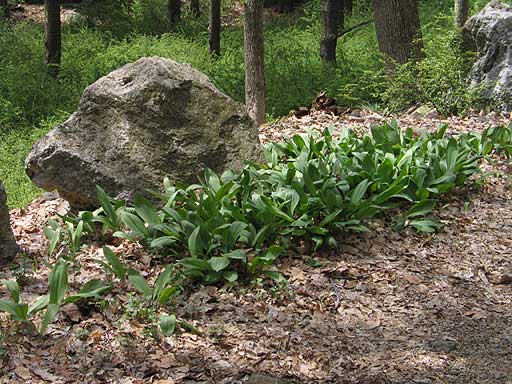The ramp (Allium tricoccum), or wild leek, belongs to the same pungent genus as onions (A.cepa), chives (A. schoenoprasum), and garlic (A. sativum), not to mention the showy ornamentals such as A. giganteum, with its massive purple pompon head. The ramp's odor is something akin to that of garlic and onion, but distinquishes itself by its persistence and its occasionally musty flavor.
Ramps are native to eastern North America, ranging from the rich, moist woodlands of Nova Scotia and southern Quebec, south through New England and the central Appalachian states, down into the cool upland portions of Georgia, and as far west as Iowa and Minnesota.
What's in a name
The Appalachian name "ramp" comes from the British Isles, where a related plant, A.ursinum, grows wild. As one version has it, the English folk name "ramson" (son of Ram), referred to the plant's habit of appearing during the sign of Aries&emdash;March 20 to April 20&emdash;on the zodiac calendar. Another source indicates that the folk name was "ramsen," the plural form of an Old English word for wild garlic, "hramsa." The similarity between A. ursinum and A. tricoccum in taste, appearance, and growth habit led early English settlers of Appalachia to call the latter by the English folk name, which later was shortened to "ramp."
 Wild Leek
Wild Leek